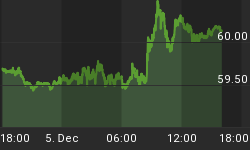UNEDITED
Over the past several months economic data and corporate earnings have shown that the economy was expanding rapidly. The last area to recover was the labor market. The last two employment reports surprised economists by revealing that over 600,000 jobs were added during March and April. The bond market has sold off ever since the March employment report. The yield on the 10-year Treasury has jumped over 100 basis points over the past two months in anticipation of the Federal Reserve raising interest rates much sooner than previously expected.
The rise in interest rates is also causing the stock market to contend with historically high PE ratios. It was popular to believe that it was acceptable to pay a higher multiple if interest rates were low (for a discussion on this fallacy please read Clifford Asness' study, Fight the Fed Model: The Relationship Between Stock Market Yields, Bond Market Yields, and Future Returns ) With interest rate rising, Wall Street analysts are actually discussing multiple compression and selling out of select industries. OK, not a lot, but there are a few. Adding a little fuel to the fire, some of the economic data is getting a little less rosy. While still showing growth, results are starting to be lower than forecasts.
Earlier this month, retailers reported their April sales results. In aggregate comparable store sales failed to meet analysts expectations. CSFB's Retail Same Store Sales Index increased 3.9% in April, just under the 4% to 6% increase they were expecting. This was by far the weakest month, but most of this weakness was due to the tougher comparison in the year ago period. Last year, April sales rebounded after February and March sales were weak due to the war. In order to smooth the war affect, it is useful to compare the two year growth for each month. This shows a much different picture and allows a better forecast to be made about the rest of the year.
CSFB Retail Same Store Sales Index (year-over-year growth)
| Jan | Feb | Mar | Apr | May | Jun | Jul | Aug | Sep | Oct | Nov | Dec | |
| 2002 | 4.1% | 5.8% | 5.9% | 0.8% | 2.6% | 4.8% | 1.5% | 1.0% | 1.2% | 2.6% | -0.9% | 1.0% |
| 1.2% | 0.1% | -0.6% | 2.7% | 1.6% | 1.9% | 3.9% | 4.9% | 5.8% | 2.4% | 3.3% | 3.9% | |
| 2004 | 5.7% | 6.8% | 6.6% | 3.9% |
The following table simply combines the sales growth for two years spans.
| Jan | Feb | Mar | Apr | May | Jun | Jul | Aug | Sep | Oct | Nov | Dec | |
| 2001-2003 | 5.3% | 5.9% | 5.3% | 3.5% | 4.2% | 6.8% | 5.5% | 5.9% | 7.1% | 5.1% | 2.4% | 4.9% |
| 2002-2004 | 7.0% | 6.9% | 6.0% | 6.7% |
Comparing the two tables above reveals that the main cause of April being weak was the tougher comparison in the year ago period. May and June will offer more easier comparisons, but starting in July, every month except October will be tougher than any month in the first half.
Auto sales have also started to slow. This week, Ford said that, "the outlook for the second half of the year appears to be difficult." Ford said that it expects to earn between $1.26 and $1.31 per share for the first half of the year, up almost double the $0.68 earning last year. During the second half, Ford expects earnings per share of only 24 to 29 cents, far less than the 46 cents last year. This provides a range of $1.50 to $1.60 for the year, compared to the $1.89 analysts are predicting.
Last week, auto dealer, CarMax announced it would not meet analysts earning estimates. The following paragraph is from its press release:
"As far as we can tell at this point, the sales softness appears to be market-wide, not CarMax-specific," Ligon said. "This is supported by initial DMV data for both March and April, which suggests that CarMax continued to gain market share across our comp markets in both months. We have experienced softer sales broadly across all our markets. We are unable to link this sales volatility with any single market factor, however. Some of the factors that may be playing a role in the market's sales volatility include: consumer reactions to higher gas prices; the recent spike in mortgage interest rates, affecting the availability and attractiveness of mortgage refinancing and therefore reducing the additional cash available for big ticket purchases; the normal short-term disruptions associated with manufacturer incentives aimed at reducing excess inventories; and the somewhat higher than normal wholesale price increases in March and April."
Bond investors are not encouraged by recent trends in the auto sector. GM's 7.75% 2036 bonds have declined 7.4% this month, which is the worse performing bond among the 3,749 bonds tracked by coverage list. Similarly, Ford bonds maturing in 2028 are down 4.7%.
Rising mortgage rates are starting to slow potential homebuyers. For the first time since the first week in April, the Mortgage Bankers Association Purchase Index dropped. Make no mistake, housing demand remains strong. Even after the 8.1% drop, the index remains at a level higher than all but three weeks prior to this year.
While the economy has continued to expand, there are starting to be pockets of weakness. While the weakness is mostly just on a relative basis, it is causing investors to reassess their assumptions for the second half of the year.
















